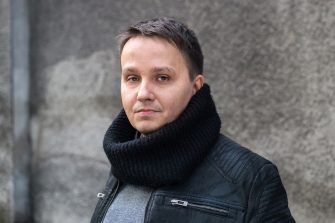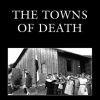Mirosław Tryczyk graduated in philosophy from the Faculty of Social Sciences of the University of Wrocław, where he obtained his doctorate in 2007. After graduation, he was a philosophy teacher at the Belgian Polonia Secondary School no. XIV in Wrocław; he also collaborated with the Higher School of Banking in Wrocław, the “Edukacja” Higher School of Management, and the University of Lower Silesia in Wrocław. In the years 2015–2017, he was a researcher at the Jewish Historical Institute in Warsaw. In 2019, the Polin Museum of the History of Polish Jews selected him for a nomination awarded to persons, organizations or institutions actively working to protect the memory of the history of Polish Jews.
He is the author of books on the history of Russia and the history of the Holocaust.
His book “Drzazga. Kłamstwa silniejsze niż śmierć” (A Splinter. Lies Stronger Than Death), describing the pogroms of Jews in 1941 and their consequences for contemporary Poland, was included in the “ten” books nominated for the Ryszard Kapuściński, for the best literary reportage (2021) and also reached the finals of the Angelus Central European Literary Award (2021) and of the finals of the 8th edition of the Teresa Torańska Newsweek Awards (2021) the book was also awarded the title of The Best Polish Reportage of 2020 by the portal CzytamyReportaże.pl. His book “Miasta śmierci. Sąsiedzkie pogromy Żydów” (2015), was translated into English by prof. Frank Szmulowicz and appeared in print in the American scientific publishing house Rowman & Littlefield under the title “The Towns of Death. Pogroms Against Jews by Their Neighbors” (2021).
In 2020, he was a historical consultant for the film “Wesele (film 2021)” directed by Wojciech Smarzowski.
References
” The Towns of Death relies on witness reports from survivors, bystanders, and the murderers themselves as found in court testimonies to describe the pogroms of Jews in Eastern Poland in 1941–1942 perpetrated by their Polish neighbors. The author demonstrates the pivotal role of the Catholic clergy and individual priests, the intellectual classes, and political circles in perpetuating anti-Semitism, often leading to the murder of thousands of Polish Jews.” Rowman&Littlefield.
” There are very few books which influence the rewriting of history, but this book should be one of them. It is the history of the fate of the Jewish communities in fifteen towns and villages in eastern Poland in the Bialystok region, in which the Jews were murdered beginning in summer 1941 not by the Nazis, but by their Polish neighbors. ” Dr. Efraim Zuroff, Lay of the land .
Interviews
“As a boy, Mirosław Tryczyk received a mysterious bag of coins from his dying grandfather. Listening to the conversations of adults, he picked out disturbing words about his beloved relative. Like splinters, these words cut him so deeply that he made many attempts to uncover the history of his family from Podlasie, in north-east Poland, eventually discovering his grandfather’s involvement in pogroms in the village of Wólka Dobryńska.
In 2015, Tryczyk published the widely discussed book Towns of Death: Pogroms of Jews by their Neighbours (Miasta śmierci. Sąsiedzkie pogromy Żydów). His latest non-fiction work, published this year, is Splinter: Lies Stronger Than Death (Drzazga. Kłamstwa silniejsze niż śmierć). It depicts the struggles of family remembrance and denial, of coming to terms today with the awareness of what happened in the past, and of restoring the memory of the pogroms of Jews by their neighbours that took place in Podlasie in 1941-42, interweaving Tryczyk’s own family history with those of others.” Agnieszka Wądołowska, Notes form Poland


